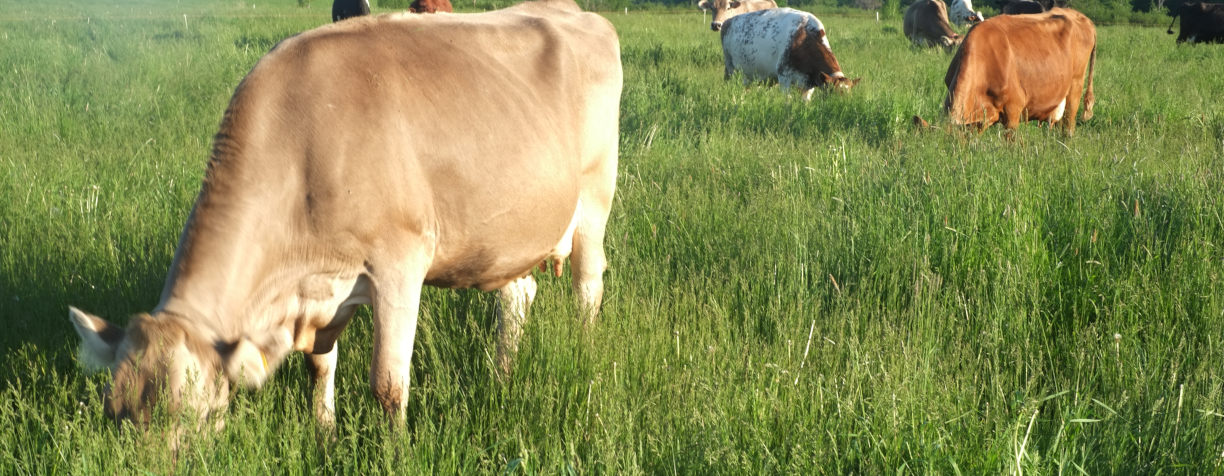By Karyn Eckert, Regional Editor
The Country Today
MEDFORD — For Joe Tomandl III, transitioning his home farm to organic just made sense. Grazing in the very northwest corner of Marathon County since 1998, Tomandl and his wife, Christy, had watched the organic market for several years before deciding last spring to make the leap. They had tried marketing through a grass-based milk company, but the demand wasn’t there. Tomandl said he came to the conclusion organic is not just a fad.
“It’s here and it’s real,” he said. “This thing is here to stay.”
The recently released 2014 Organic Survey from the U.S. Department of Agriculture showed Wisconsin is second in the nation in the number of organic farms (1,228) and third in acres (228,000). California tops both categories. From 2008 to 2014, the number of certified-organic farms grew from 10,903 to 12,613, a jump of 15 percent. Milk is the top commodity with sales of $1.82 billion. Of the organic farmers surveyed, 39 percent plan to increase production in the next five years.
The Tomandl family hosted a pasture walk Oct. 7 to share their experiences preparing for and beginning the transition to organic. When they left their jobs teaching agriculture and started farming 17 years ago, the couple had 30 cows. By 2010, they were milking 190 and grazing them on 320 acres. Knowing they were still growing the herd, they debated increasing their stocking rates to milk more cows.
“We decided rather than doubling, why don’t we duplicate this thing?” he said.
They purchased a neighboring farm and established a second herd about the time Tomandl became director of the Dairy Grazing Apprenticeship. He is also one of the program’s master graziers and has apprentices working on the farms. So far the plan to copy the first farm is working well, and in the future, they may buy more farms.
“We may still milk 1,000 to 2,000 cows, but it will be over many farms,” he said.
The strategy also will allow the couple to ease out of dairying in the future, selling farms one by one rather than trying to liquidate one large farm.
As longtime graziers on the home farm, Tomandl said the transition to organic wasn’t a major change. The land was already certifiable and the cows could be transitioned over a year. Tomandl said he decided to transition the home farm but leave the second farm conventional. In order to maximize cash flow for the transition year, they rearranged both farms. Cows in their first and second lactations with the best grass genetics were moved to the home farm, along with all the bred heifers from both herds. The second farm is now home to older cows and cows that need more grain supplementation to milk well on grass.
Tomandl said they’ve scaled back the herd on the home farm to 120 milking cows but have 80 heifers to calve next spring. He said heifers are cheaper to transition to organic, so it made sense to cut back on milking cows and stock heifers. The home herd had its production cut to about 37 pounds a day, but the conventional herd of more than 200 cows is making up the income difference with an average of 60 to 65 pounds of milk per day.
“Between the two dairies, we still ship quite a bit of milk,” he said.
Farms transitioning to organic this year are in a much better position to buy feed. Tomandl said with a fair amount of organic forage out there, the price isn’t too bad. He plans to keep his same model of grazing his land and buying in about two-thirds of the winter feed. So far, Tomandl said it pays to have a nutritionist come in, take pasture samples and balance the ration for the cows. They have cut back to about 8 pounds of grain per day, but a balanced diet gave them a 4- to 5-pound bump in production.
Organic certifier Dave Engel was on hand to answer questions about the transition process. He said one of the first steps of the certification process for land will be a four-year field history. If no prohibited materials have been applied to fields, it can be certified right away. He said of-ten, the use of treated seed can slow the process and if there are no records to indicate otherwise, conventional legume, soybean and corn seeds are usually assumed to be treated. He said non-treated seed is OK during transition, but certified-organic fields must be planted with organic seed in most cases.
Engel said as a certifier and founding member of Organic Valley, he has seen organic dairy, vegetables and eggs grow in market share. He said organic vegetables are Wisconsin’s fastest-growing sector currently.
“Meat hasn’t taken off like we thought it would,” he said.


